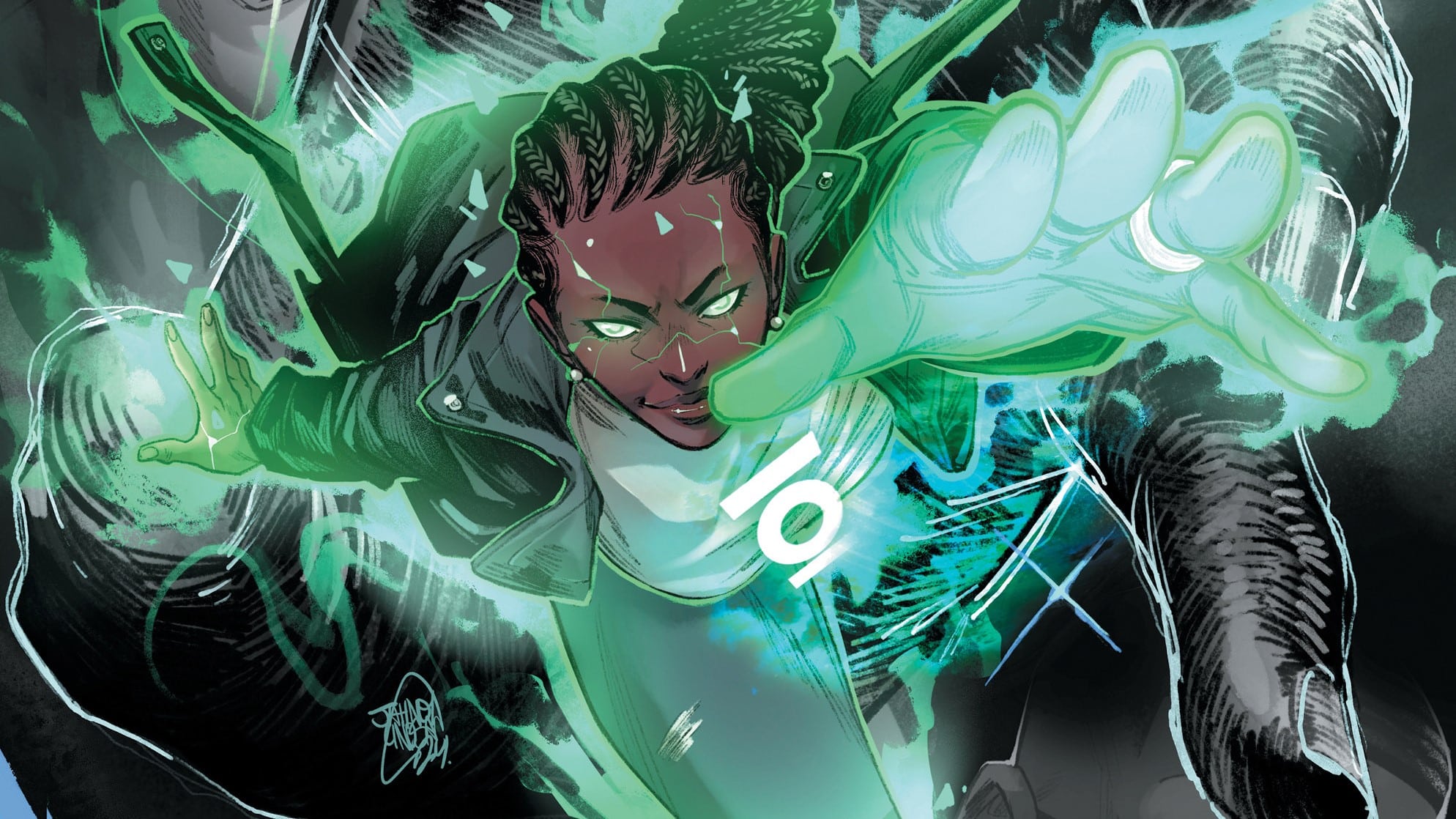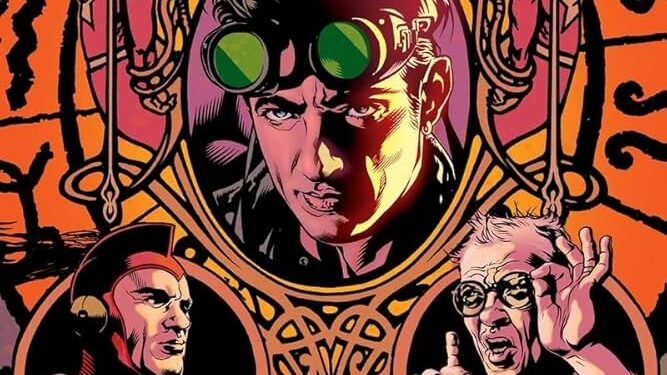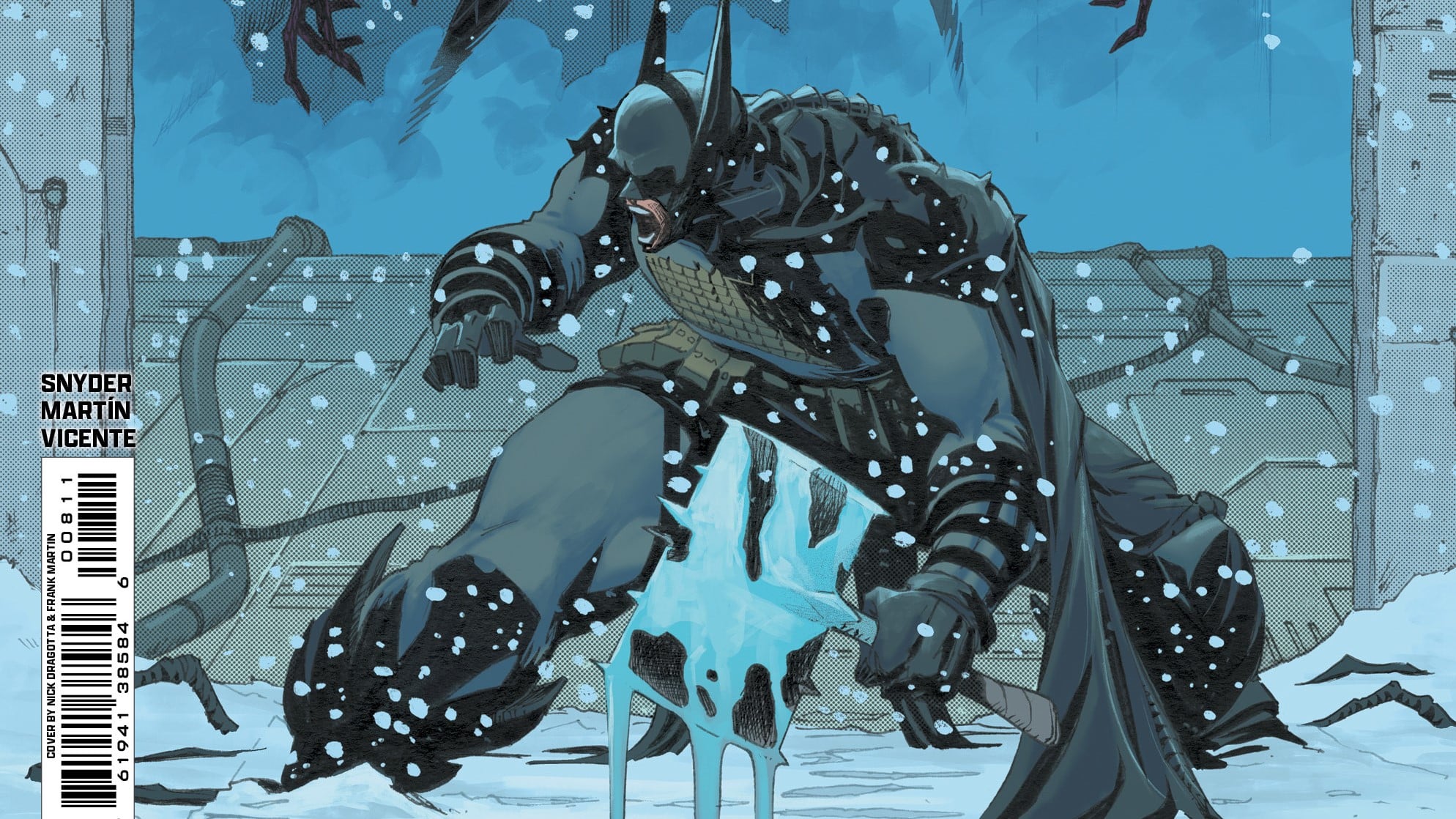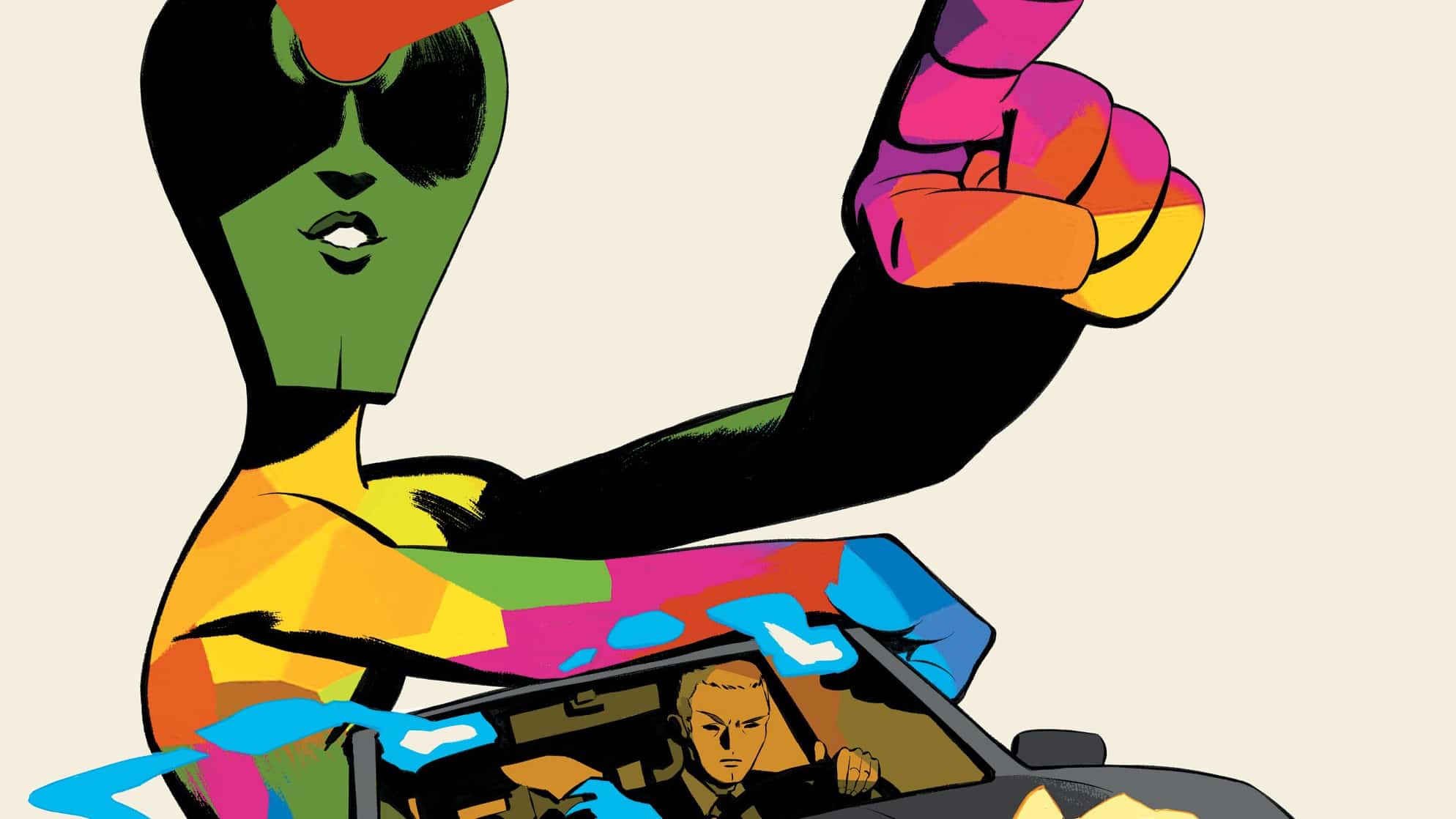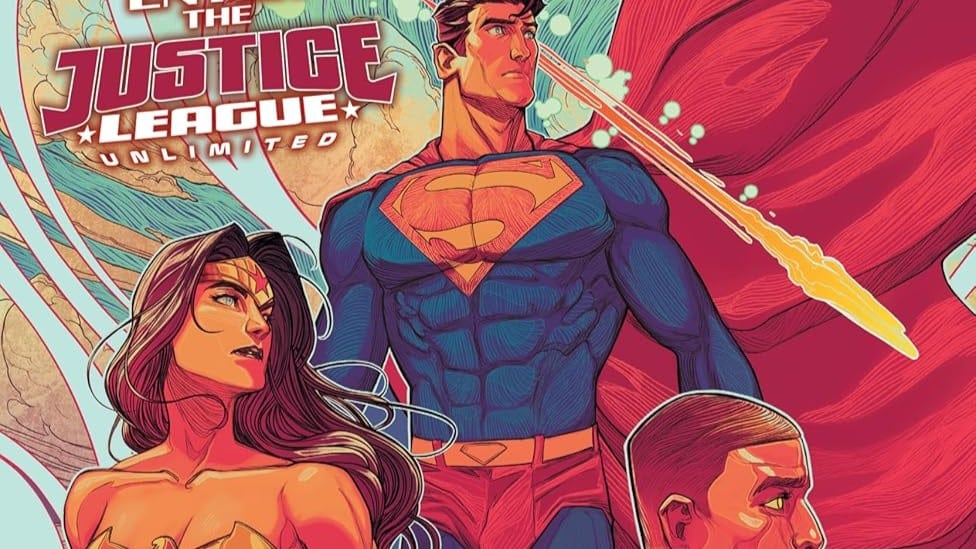Jake Murray: Let me start off with the coldest take since Dr. Victor Fries took up his nom de guerre: The first wave of titles in DC’s Absolute line have been pretty damn successful (that’s Absolute Batman, Superman and Wonder Woman for the dozen or so uninitiated). Let me stun you with another ice-cold blast of comics criticism: They’re also really good.
While the A-list cast of creatives has a lot to do with the line’s quality and success, as well as the publishing freedom granted by editorial, cynics could argue there’s another more fundamental factor at play here: This is DC’s big three. If you can’t make bank with your most popular characters, you may argue, you’ve fumbled the bag. To be clear, this isn’t my view. I think the quality of the stories has been elevated beyond your usual superhero fare. The takes on the characters have been variations rather than revolutions; they’ve created narrative opportunities to explore the real essence of these characters in different circumstances than we’re used to. Wonder Woman as a magician from hell, Superman as an anti-establishment agitator, Batman as a working-class everyman — it’s been great, hasn’t it?
Matt Lazorwitz: It’s been a fascinating experiment, that’s for sure. Batman and Wonder Woman are very different takes, while Superman goes back to both his first appearance and somewhat what Grant Morrison was doing at the beginning of the New 52, but making deeper alterations to the early lore. Underlying all this is what we know about the world, that this is theoretically a hopeless world, and Darkseid misunderstands these core concepts as he created it. Stripping away these elements has still left that essence, as you said, and that essence is hope and virtue, even in the face of insurmountable odds. It’s something I personally cling to every day.
Scott Redmond: As we, and all comic book fans know, tapping your biggest creators to do new takes on characters isn’t a given win. Plenty of publishing initiatives like this lay sprinkled along the path that brought us here. This isn’t DC’s first attempt at an “Ultimized” world, as the internet has taken to calling these attempts. Nor is it their second or even third. Fourth time’s the charm? It really does feel like that, as you both have noted.
I was concerned at first that in a world formed by Darkseid, the aforementioned darkness would be too much. Instead, what makes this world work so well is that it’s neither inherently dark nor “gritty” for the sake of it. Sure, there are darker elements at play, but as mentioned, the embers of hope and virtue make it work. It could have been some post-apocalyptic dark world, but instead it’s a world that in many ways feels similar to our own: dark, but still full of potential and hope if you look in the right places.
Jake: The second wave of titles is just as stacked with superstar talent as the first. Jeff Lemire and Nick Robles on Absolute Flash; Deniz Camp and Javier Rodriguez on Absolute Martian Manhunter; Al Ewing and Jahnoy Lindsay on Absolute Green Lantern — the potential is undeniable. But it’s still almost impossible to shake the nagging feeling that the success of these titles will define the Absolute line as a publishing initiative overall. While commercial success isn’t really in the purview of a critic, the margin for error feels smaller here. The more interesting question is how that defines the approach creatives take: Do they play it safe or go experimental? Let’s take a look.
Absolute Flash #1
Written by Jeff Lemire, drawn by Nick Robles, colored by Adriano Lucas and lettered by Tom Napolitano.

Jake: Absolute Flash, at least as a Wally West origin story, doesn’t so much flip the script as modernize it. A similarly lonely, melancholy teenage boy, Wally is living with his father on a military base following his mother’s death and feels neglected and disconnected from his father. His listless wandering leads him to base scientist Barry Allen, who takes him under his wing (much to his father’s chagrin). Motivated by a combination of defiance of his father, his curiosity for science and his need for a friend, he visits the lab late one night to find Dr. Allen experimenting with something that appears to be the Speed Force. Next thing he knows, his would-be mentor is dead and he’s suddenly in possession of powers beyond his imagining. What did you make of this twist on Wally’s origin?
Matt: Just a note: Lemire has said in interviews that this Wally is not connected to the Speed Force, so I don’t know what Barry was experimenting with, but it’s something different.
Wally is the perfect character for Lemire to reimagine in this setting, as he is the king of sad dad energy and strained relationships between fathers and sons, and that is so a part of Wally West. Rudolph as the straight-arrow military guy rather than the scheming opportunist is possibly the biggest change outside Barry’s death and one character who is missing. It’s a cosmetic change, but one I noticed for reasons that have to do with a personal kinship I’ve always felt with Wally about that aspect of his relationship with a shifty dad.
Iris missing from this story is something that obviously jumps to the fore if you’re a Flash fan. But for what Lemire is doing, she doesn’t feel necessary at this moment. I’m curious to see if she’ll pop up in the future, though.
Scott: My relationship with the Flash is very touch and go. I’ve never really read any full runs of the character, only picking up some things here and there. I watched The CW series from start to almost finish (missed the last season and a half). That said, Wally West has always been my guy. Both because of the Morrison-era JLA that I devoured as well as the animated series. So seeing him get the tap as the Flash in this world spoke to me right away.
This modernization was really intriguing. As someone who struggles with anxiety, seeing Wally not only having to deal with it but how it interacts with his new powers really caught my attention. Whether that will pay off and be handled well through and through remains to be seen. Either way, at this moment, I’m dialed in.
Jake: One element I loved in particular is Nick Robles’ redesign. His Wally feels like a modern teenager should — anxious, awkward and defiant, yes (weren’t we all), but it’s the look that really stands out. I can’t help but draw parallels with Rachel Summers, who would be described as androgynous back in the day (they even look alike). Wally presents to me here in a similarly gender-fluid way. To opine on the significance of this element to his characterization after just this issue would be mostly supposition, so I’ll leave it there, but it’s a reading I’ll be keeping in mind moving forward.
What were your thoughts broadly on Robles’ work overall in this issue?
Scott: Robles’ artwork is top notch. One of the things that really stands out about the line so far is the artists and how much they’re being allowed to cut loose. No two books have a similar feel to them. They’re really playing within the spheres that feel appropriate for the given character and theme.
Robles made me actually fan myself a bit when looking at Captain Cold. The only other time that has happened was Wentworth Miller’s version from the CW series. I see you, Robles! More like Captain Hottie. … Anyways, I’m fully in agreement about the way he draws Wally. As a whole, the choices for the appearance of the use of speed powers and other elements really stand out. Again, really aiming for the fences here.
Jake: The main challenge I had with this issue was the pacing. Lemire’s choice to flash back and forth multiple times worked for the first two-thirds of the issue, but it created some uneven pacing that meant that the reveal of Barry’s death didn’t land with as much impact as it should have. The flashforward a year and Mirror Master reveal was a bit excessive and should have been saved for the next issue. Overall, though, I’ll take an overabundance of good ideas over a deficit any day.
Scott: Doing the emote finger pointing up to all of the above. It kind of felt a bit like trying to get as many toys on the table as possible at once. Nice idea, nice execution, it just felt a tiny bit off.
Absolute Martian Manhunter #1
Written by Deniz Camp, drawn and colored by Javier Rodriguez, and lettered by Hassan Otsmane-Elhaou.

Jake: Let’s take the creative-approach question first with this one. What Deniz Camp and Javier Rodriguez have created here is as experimental as it gets with Big Two storytelling, but the plot itself is extremely straightforward. Detective John Jones is going about his daily routine, getting his coffee when someone decides to blow up the coffee shop. The rest of the issue plays out like a severe post-traumatic event, brain damage and all. It’s a psychedelic fever dream. Why the psychedelia? Oh yeah, turns out a Martian has bonded itself to Jones’ mind during the process. Or is it a figment of his imagination? Who knows? Either way, what did you make of Camp and Rodriguez’s reimagining of the character?
Matt: I am an unequivocal fan of Martian Manhunter. He falls in my top 10 DC characters, and close to, if not making, the top 5. But since his death in Final Crisis, he has mostly felt at ends. This is the seventh Martian Manhunter solo, fourth since that “death,” and most of them are forgettable to not-so-good. This? This I liked.
J’onn lends himself to a surrealist take. Mars can be a landscape of surreality, especially when you consider the DC version is a world of telepaths and shapeshifters, so artistically there are very few limits. And juxtaposing that surreality with more grounded John Jones stuff worked for me. Martian Manhunter has much less of a supporting cast and rogue’s gallery to reimagine than the rest, so Camp is working with a fresher canvas, even if the suicide bomber is the reimagining of the Kite Man to Manhunter’s Batman, Human Flame. He is still playing with the family aspect that has been such a modern part of J’onn, but here it’s John Jones that has the family, not J’onn J’onzz.
Without giving anything away, one of the things I really dug was that this is a comic that benefited from being read in a physical format. The last two pages have a fun little gimmick that rewards holding the comic in your hands, and as someone who still buys most of what he reads physically, I just enjoyed that.
Jake: As you say, Matt, MM suits the surrealist take perfectly, as does Rodriguez. The kaleidoscope of colors he’s so well known for suited this surrealism wonderfully, and brought his trippy, fluid layouts to life in a way that was, well, mind blowing. When you reread the issue knowing the twist, you begin to notice there are two competing forces on the page. There’s John’s mind, which is spiraling into chaos and shapelessness, and the guiding hand of the Martian giving it structure again, revealing the world to John in an entirely different way. It’s fantastic.
Scott: I loved every single thing about this. As already stated, this character is the perfect piece to do something with off the much beaten path that is superheroes. It’s not just thinking outside the box but tossing the box aside and leaving behind the universe the box resides within. A character more often than not used for his telepathy residing within the mind of another is chef’s-kiss type stuff.
Again, the visual choices made for this universe are on point. Rodriguez is one of those artists that hasn’t met an assignment yet that he can’t take to the level it was meant to and then five more. Surreal or horror or other things that stand outside the “norm” are bread and butter for him. I wish I had a physical issue to see the page Matt mentioned the way it was meant to be. It was wild in digital but would have been supremely wilder seen physically.
Buy Absolute Martian Manhunter #1 here.
Absolute Green Lantern #1
Written by Al Ewing, drawn and colored by Jahnoy Lindsay and lettered by Lucas Gattoni.

Jake: Now to the third and final installment. Al Ewing and Jahnoy Lindsay’s take on the Green Lanterns is a dark thriller that focuses on happy-go-lucky collectibles dealer Hal Jordan and his day from hell. Although details are deliberately kept vague, we know he met the alien Abin Sur who, instead of imbuing him with the Green Lantern power, appears to have infected him with a malevolent force that causes death and destruction everywhere he goes. In another invocation of Darkest Night, this manifests itself as a black hand. Concurrently, and presumably not coincidentally, a giant green lantern has dropped from the sky and destroyed the small town of Greenview where Hal lives with friends John Stewart and Jo Mullein, both also Green Lanterns in main continuity, the latter of whom is revealed to have taken up to the mantle again.
Scott: This series already won points with me before I saw the first issue, simply for the fact that Jo Mullein was to be the main Lantern for the story. I’m not a Hal Jordan fan at all. Generally I find him to be kind of boring and very stereotypical. Shifting him to possibly being the antagonist intrigues me. It feels like the most thought that has been put into the character in quite some time.
Same with Abin Sur being this larger-than-life force, rather than just some alien dude who crashes. Sure, they’ve tried to build his back story retroactively in the main universe, but it was always kind of shruggy as a whole. There is something that feels truly alien about this take on the character, and the effect they’re about to have on this world.
I am curious to see how John factors into all this with the roles for Hal and Jo seemingly (at this moment) carved out.
Jake: Ewing’s choice to move away from Hal Jordan as the bad boy all-American fighter pilot is a smart one for me. This archetype, while I’m sure it still has its demographic, is played out at this point in history. The idea of someone so carefree inheriting a malevolent force that will essentially ruin their life feels much more appropriate a) for the period of history we’re living in and b) the kind of story I want to read.
I have to say though, there was something about Absolute Green Lantern #1 that didn’t hit for me as a first issue. Ewing has built more than enough credit for this not to be a problem, but I didn’t feel as engrossed in the mystery as I was expecting to. Perhaps this was because the pacing was a little slow, or there were scenes that felt a little superfluous like the motorcycle gang, or because the script skirted around the mystery too loosely, I don’t know. It just didn’t hit me in the way the first wave of titles did. Again, not a concern at this stage because I’ve no doubt Ewing will do something great with the Lantern lore, just a point to note.
Scott: While I mostly enjoyed the way this issue came out, I do agree there seems to be something slightly amiss with the pacing and presentation in this wave. All three of the first wave books have played with flashbacks and filling in the origin gaps around the main stories. Here, though, it feels kind of odd because mysteries are being built that feel kind of hanging, compared to the main books being a bit more straightforward in their approach. Neither way is inherently right or wrong, but as noted it does feel like something is a bit off.
I wonder if there was some feeling that they needed to slow-play these characters more, just because of the bit more uphill situation with their standing at times. Especially with the changes made to some of the characters and their roles.
Jake: Looking across these three titles again, there’s no doubt DC has fire in its hands with a captive audience dancing to the flames. There’s no time to dig into the phenomenon today, but a cursory glance at the current sales chart indicates that alternate universes are very much a la mode. If I could offer one potential theory, it’s this: After the last decade or so of IP saturation, in which the “brands” associated with these characters have become overly protected to the point where they become restrictive to creators and superhero media feels more and more like a rigid template, people want to see something different done with these characters. But not too different. They still want to live in these characters’ worlds but, as with real life, want to progress and experience new and exciting things. Here’s an actual hot take: Continuity is a rut.
I’m not suggesting that these Absolute titles are emblems of that philosophy, but they’re certainly scratching the itch that many readers have. Long may they do so.
Buy Absolute Green Lantern #1 here.
Disclaimer: As an Amazon Associate, ComicsXF may earn from qualifying purchases.

